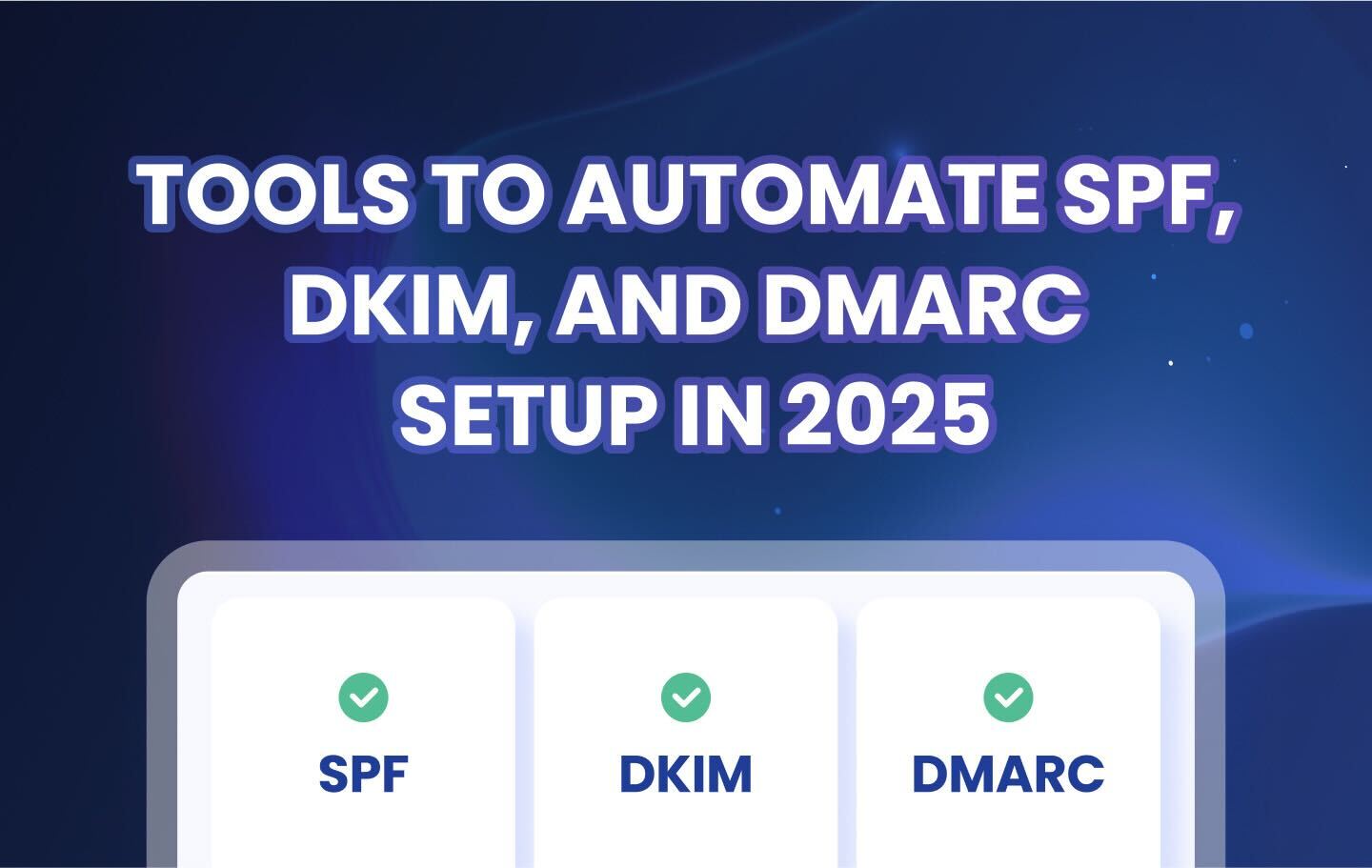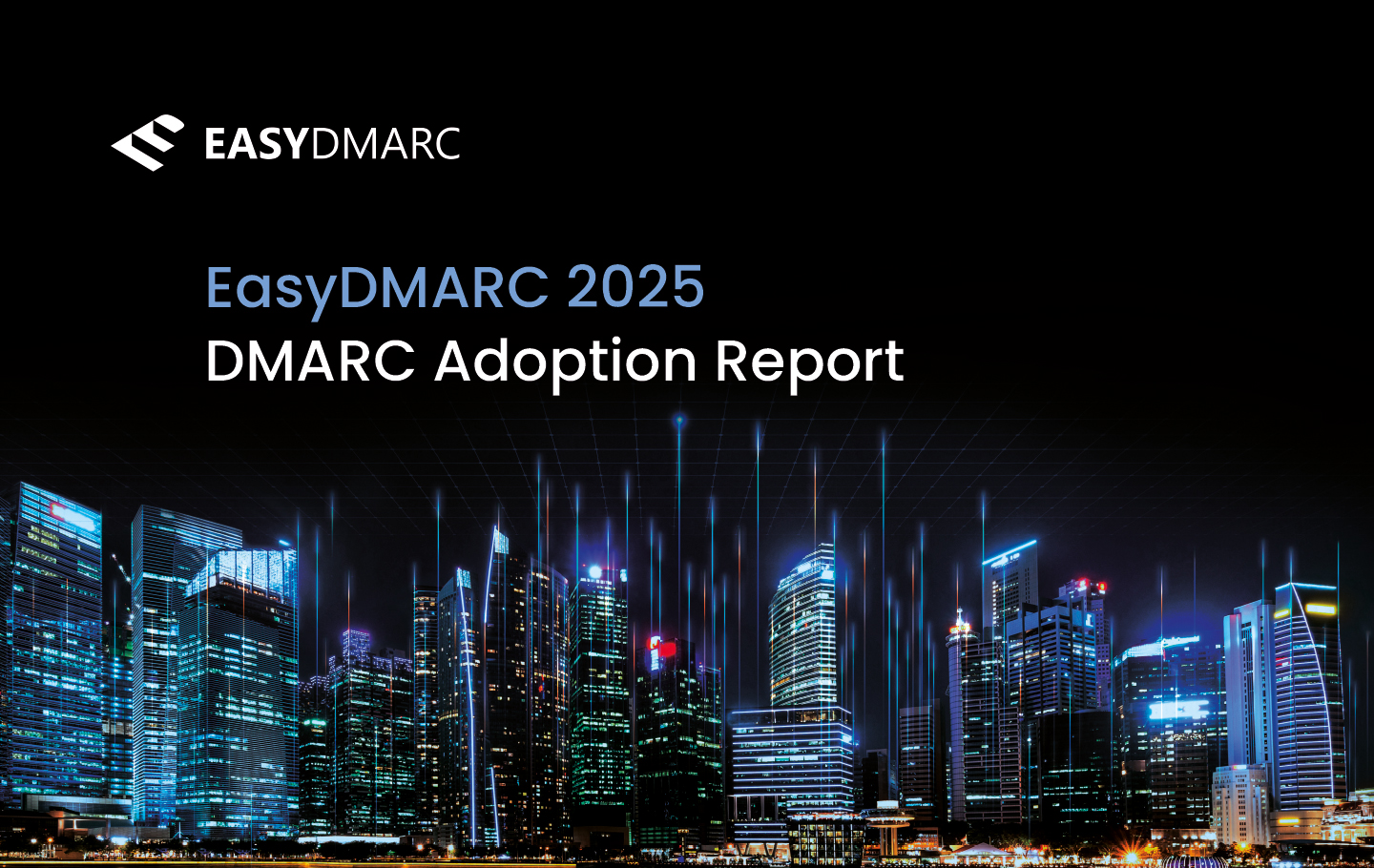As phishing attacks, spoofing attempts, and business email compromises grow more sophisticated, businesses need reliable ways to protect their domains, and that’s where automated email authentication comes in.
Setting up email security protocols like SPF, DKIM, and DMARC manually can be time-consuming and error-prone. Automation tools simplify this process, helping organizations secure their email channels without needing deep technical knowledge. With the right tools, you can reduce misconfigurations, adhere to proper enforcement, and maintain visibility over who’s sending on behalf of your domain.
In 2025, automated solutions aren’t just about convenience, but a key component of employing a scalable, proactive email security strategy.
Key Takeaways
- Email authentication is necessary for organizations, and automating your SPF, DKIM, and DMARC setup reduces errors, saves time, and guarantees consistency.
- Automation tools should be appraised on specific business needs, but also for real-time, detailed monitoring, ease-of-use, integration capabilities, and customer service expertise.
- In 2025, email authentication is obligatory, part of email security best practices. All major mailbox providers require SPF, DKIM, and DMARC for high-volume senders, with failure to do so potentially leading to inbox rejection and reduced campaign effectiveness.
- Learning how to setup DMARC can be complicated and may require hiring a professional, but with automated email authentication solutions, you can outsource this task affordably and effectively.

Key Features to Look for in Email Authentication Automation Tools
Choosing the right automation solution can save time, reduce errors, and strengthen your email security posture, but only if the solution is a good fit for your organization. Here are the most important features to look for:
- Ease of Use: A user-friendly interface with guided setup, minimal DNS editing, and helpful tips makes the process accessible even for non-technical users.
- Comprehensive Support: Your chosen solution should support SPF, DKIM, and DMARC setup in one place. Extra support for protocols like BIMI, MTA-STS, and TLS-RPT is a bonus.
- Knowledgeable and Available Support Staff: Email authentication is an ongoing and ever evolving task. Make sure to determine if your chosen solution has accessible tools like a DMARC lookup or SPF Checkers, and expert DMARC engineers and experts on call to help.
- Seamless Integration: The solution should work smoothly with major email platforms such as Google Workspace, Microsoft 365, and others—ensuring a frictionless experience.
- Automation and Monitoring: Look for automatic DNS updates, ongoing traffic analysis, real-time alerts, and issue detection to keep your domain secure over time.
- Detailed Reporting: Features like DMARC aggregate (RUA) and forensic (RUF) reports, visual dashboards, and insights into unauthorized senders help with transparency and control.
7 Top Tools to Automate SPF, DKIM, and DMARC Setup
EasyDMARC
EasyDMARC is a comprehensive solution built for organizations and MSPs managing multiple domains. It offers scalable domain management, real-time visibility into SPF, DKIM, and DMARC data, and strong policy enforcement tools. Designed for ease of use, the platform simplifies email authentication with intuitive dashboards, structured reporting, and expert DMARC engineer support. Here are their standout features:
Multi-Tenant Self-Service Platform
EasyDMARC offers a multi-tenant dashboard that helps organizations manage thousands of client domains from one centralized interface. With built-in grouping, tagging, and filtering options, it’s easy to organize accounts and monitor domain health at scale. Teams can quickly identify which clients require attention based on authentication issues or current policy status.
Simple Domain Onboarding and DNS Automation
The platform simplifies domain onboarding by automating DNS record checks. Organizations can instantly verify SPF, DKIM, and DMARC records during setup, minimizing the risk of misconfigurations and accelerating deployment across client accounts.
DMARC Monitoring and Reporting
EasyDMARC delivers real-time access to both aggregate (RUA) and forensic (RUF) DMARC reports. Interactive dashboards visualize authentication results, traffic sources, alignment problems, and policy actions, giving MSPs and organizations the insight needed to detect unauthorized senders or misconfigured systems efficiently.
SPF and DKIM Tools
To support strong authentication, EasyDMARC includes advanced SPF and DKIM tools such as SPF flattening, which prevents DNS lookup issues, and precise record validation. These features reduce manual errors and make it easier to maintain alignment across multiple domains.
Policy Management and Enforcement
With built-in support for progressive enforcement, EasyDMARC helps MSPs guide clients through a secure transition from monitoring (p=none) to full protection (p=reject). The platform provides visibility into domain performance at each policy stage, allowing for smarter decisions backed by real data.
Optional White-Labeling Capabilities
For MSPs delivering email authentication as a service, EasyDMARC offers optional white-labeling. This allows teams to apply their own branding to client dashboards and reports, creating a consistent and professional customer experience.
Partner Success Program
EasyDMARC supports partners through its dedicated Partner Success Program. MSPs receive onboarding assistance, training sessions, and strategic guidance from certified DMARC engineers to help them grow their DMARC service offerings and deliver long-term value to clients.
MXToolBox
Founded in 2004 and headquartered in Austin, Texas, MxToolbox is a privately held company that specializes in offering fast, accurate, and free network diagnostic and lookup tools to support global internet operations. Used by millions of tech professionals worldwide, MxToolbox helps diagnose and resolve a variety of infrastructure issues. The company prides itself on innovation, with many of its online tools originating from internal projects that were later shared with the community. As the platform continues to grow, MxToolbox remains committed to developing new tools and services to meet the evolving needs of its users.
Dmarcian
Dmarcian, founded by one of the original DMARC specification authors, works to make DMARC accessible globally. The platform provides expert support, tools, and educational resources to help organizations from various sectors—such as banking, government, and marketing—implement effective email authentication.
Its DMARC Academy offers a free curriculum covering DMARC, SPF, and DKIM, and the company operates across multiple regions to meet data sovereignty requirements.
Red Sift OnDMARC
OnDMARC, part of Red Sift’s Pulse Platform, is an automated cloud-based solution designed to protect organizations from phishing, spoofing, and business email compromise.
OnDMARC simplifies DMARC, SPF, DKIM, MTA-STS, and BIMI implementation and monitoring, requiring no manual updates to DNS records. It’s ideal for organizations looking for a streamlined, secure way to enforce domain protection across their email systems.
Agari by Fortra
Agari, now part of Fortra, offers a suite of cloud-native email security solutions that combine DMARC enforcement with AI-powered threat detection and continuous monitoring.
Agari goes beyond authentication with features like suspicious email analysis, threat intelligence, and cloud email protection, making it a powerful tool for preventing phishing, spoofing, and business email compromise while building trust in digital communications.

How to Choose the Right Solution for Automating Email Authentication
The ideal email authentication solution should not only simplify setup but also provide long-term support, visibility, affordability, and scalability. Consider:
- Scalability for Growth: If you’re managing multiple domains or expect future expansion, choose a platform that supports scalable domain management. Look for features like multi-tenant dashboards and bulk domain onboarding.
- Clear Pricing Models: Evaluate pricing plans based on your current and projected domain volume. Look for transparent billing structures, tiered plans, and MSP-friendly pricing if you’re serving clients.
- Strong Customer Support: We’ve said it before, and we’ll say it again — customer support and access to experts in DMARC is extremely important, especially during initial setup and policy enforcement. Platforms that offer in-depth documentation, onboarding guidance, and direct access to experts can significantly reduce setup time and errors.
- Educational Resources and Reporting: Solutions that include training material, contextual help, and detailed reporting dashboards empower users to understand authentication results and take informed actions.
Best Practices for Implementing Automated Email Authentication Tools
While selecting the right tool is a good starting point, there are email authentication best practices to adhere to for best results.
- Start with Monitoring: Begin by setting your DMARC policy to p=none. This allows you to collect and review reports without affecting mail delivery, helping you understand who is sending on your behalf and identify potential issues.
- Determine Compatibility: Verify that the automation tool integrates well with your existing systems, including your email service providers, DNS host, and security infrastructure. This minimizes disruptions and setup conflicts.
- Review Reports Regularly: Use your platform’s reporting features to monitor SPF, DKIM, and DMARC data frequently. Look for unauthorized senders, alignment failures, and configuration problems. Ongoing review is necessary to maintain a secure and optimized setup.
- Gradually Implement Policies: Rome wasn’t built in a day, and neither will your full enforcement of email authentication policies. Gradually move from p=none to p=quarantine, and finally to p=reject as you gain greater understanding of your email environment and user behaviors. Gradual enforcement allows time to resolve issues without disrupting legitimate email flows.
- Educate your Team: Make sure anyone involved in email infrastructure and IT security understands how email authentication works. Many tools include educational materials or support resources that can help improve adoption and reduce errors.
Automation Is the Future of Email Authentication
As businesses continue to move operations online and the complexity of email threats grows, evolving security standards make manual SPF, DKIM, and DMARC management unsustainable,especially for businesses managing multiple domains. The solutions available on today’s market mean you can automate SPF setup, automate DKIM setup, and automate DMARC setup without having to worry about accuracy, scalability, or long-term protection.
With automated email authentication tools, organizations can encourage proper policy enforcement, detect and block spoofing attempts, and gain full visibility into their domain activity. Platforms like EasyDMARC make this transition accessible to both technical and non-technical users, offering the support and insights needed to stay ahead of threats.
As we move ever deeper into 2025 with 2026 rapidly approaching, automation is the most effective way to secure your brand, improve deliverability, and build trust in your communications. Choose a solution that will help you deliver that reliability and stop threats before they damage your reputation, processes, and bottom-line.
Frequently Asked Questions
SPF, DKIM, and DMARC are all email security protocols, but each fulfil individual aspects. SPF (Sender Policy Framework) lets domain owners specify which IP addresses are allowed to send email on behalf of their domain. DKIM (DomainKeys Identified Mail) adds a digital signature to emails, verifying that the content hasn’t been altered and that it was authorized by the domain owner. DMARC (Domain-based Message Authentication, Reporting & Conformance) is the overarching protocol, and builds on SPF and DKIM by telling receiving mail servers what to do if authentication fails (monitor, quarantine, or reject) and provides reporting to the domain owner.
EasyDMARC automates the setup process by guiding users through DNS configuration with real-time validation and error detection. It checks SPF, DKIM, and DMARC records during domain onboarding, flags misconfigurations, and provides exact DNS values to add or update. For ongoing management, EasyDMARC offers monitoring dashboards, alerts for failed authentication, and automated reporting. Finally, EasyDMARC’s standout feature is their industry leading customer service and providing their customers with access to DMARC engineers, smoothing the setup process and offering ongoing support.
With automation vendors like EasyDMARC, the initial setup of SPF, DKIM, and DMARC can be done in a few hours to a couple of days, depending on your DNS provider and email infrastructure. Moving from monitoring mode (p=none) to full enforcement (p=reject) typically takes 4–8 weeks, allowing time to identify all legitimate senders and resolve alignment issues without disrupting email delivery.
Not implementing these protocols leaves your domain vulnerable to spoofing, phishing, and email-based impersonation. Major email providers like Google and Yahoo have made email authentication a requirement between 2024 and 2025, meaning unauthenticated emails are more likely to be marked as spam or rejected entirely. Failure to implement DMARC also damages your domain reputation, lowers email deliverability, and puts your users and brand at risk.


